It’s late summer, the sun bright and hot overhead. Sweaty and tired, you skirt down a scree slope, ready to get back to the truck and head to the local bar for a burger and cold beer. Your childhood hunting buddy is downslope of you, cruising along at a good clip, and turns back to call something.
What happens next seems like it’s in slow motion. He slips, rolling and sliding into the desiccated remains of a craggy, dying tree. Scree scatters as he slides to a stop with an audible “thunk” against the wood and you wince, mind automatically going to head or spinal injuries. But as your long strides carry you down the slope, you realize there’s a different problem at hand. A pressing one.
A pool of blood is soaking your buddy’s thigh, where a dead branch is sticking messily through the center of his leg. It’s too much blood for just a scratch—this is serious.
What’s your next move?
When most people hear the words “bleeding out” they tend to think of what we often see in news headlines. Mass shootings. Car crashes. War zone reporting. Lost limbs.
But for hunters, hikers, and anyone who spends time outdoors, the reality can often come in the form of something as simple as a roll down a hill. Parts of the shooting community are remarkably dependable about carrying tourniquets, but many don’t know how best to use them. And the reality is that most people you pass on the trailhead during archery or rifle seasons—and certainly during summer time scouting hikes—don’t carry a tourniquet.
They’ve probably never held one.
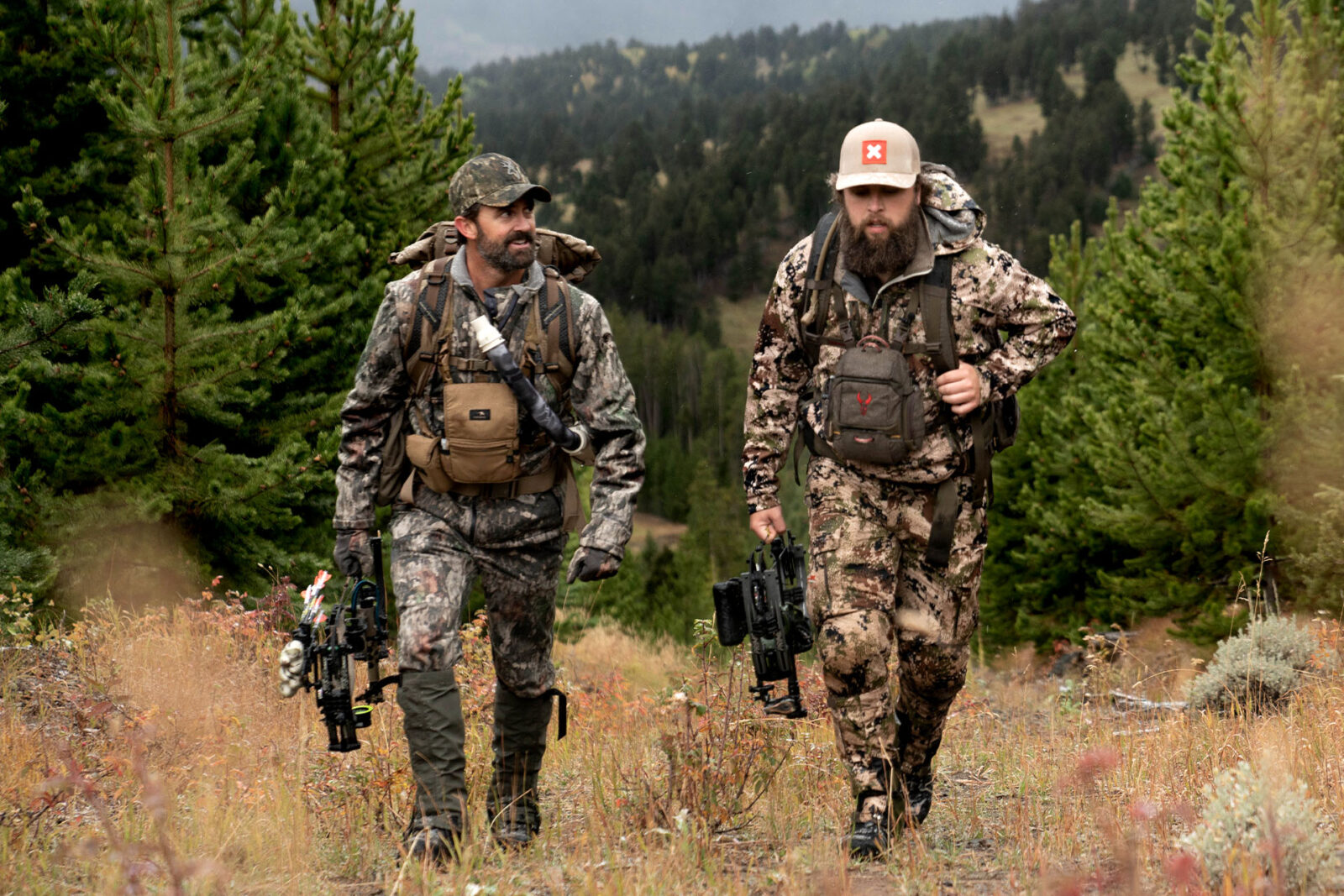
Things Go Wrong
One life lesson is that things will go wrong. It’s inevitable. And while we can’t control those random moments when things wholly out of our control spiral into something chaotic and potentially life-threatening, we can take steps to be prepared.
“It’s not an if, it’s a when,” notes Kevyn Lee, an EMT working in Los Angeles and a trainer for Medic Up Consulting. In Kevyn’s world, he sees every day the reality of things going wrong—and it’s part of what has encouraged him to teach Stop the Bleed courses to civilians.
A national awareness campaign aimed at teaching essential life-saving techniques to control bleeding in emergency situations, Stop the Bleed training takes the basics and makes them manageable for “everyday folks.” Its primary goal is to provide individuals with the knowledge and tools to help save lives when faced with severe bleeding emergencies, regardless of the cause. The course is designed with anyone who carries or is around guns in mind, though in reality it’s good training for every individual. Because while hunters and shooters might have severe wounds in mind, the odds are just as good you’ll see massive bleeding during a highway incident as you will in the hunting blind.
Stop the Bleed training isn’t just about being able to self-tourniquet and take care of yourself, either. It’s key to be able to take care of yourself, but also your friends, family, and people you may randomly meet who are in need. Accidents happen, and it’s our job to be trained in how to aid when appropriate—and to carry the necessary equipment to do so without causing further harm.
It’s easy to think you’ll have the right instinctive reaction. We’ve all seen the movies, right? It can’t be that hard? You just take off your belt and wrap it a few times, right?
Ah, no. Not how it works, friends. What if the wound is on the chest? What if it’s in a shoulder or hip joint, where you can’t get that belt wrapped around? What makes us think a belt is a good idea, anyway?
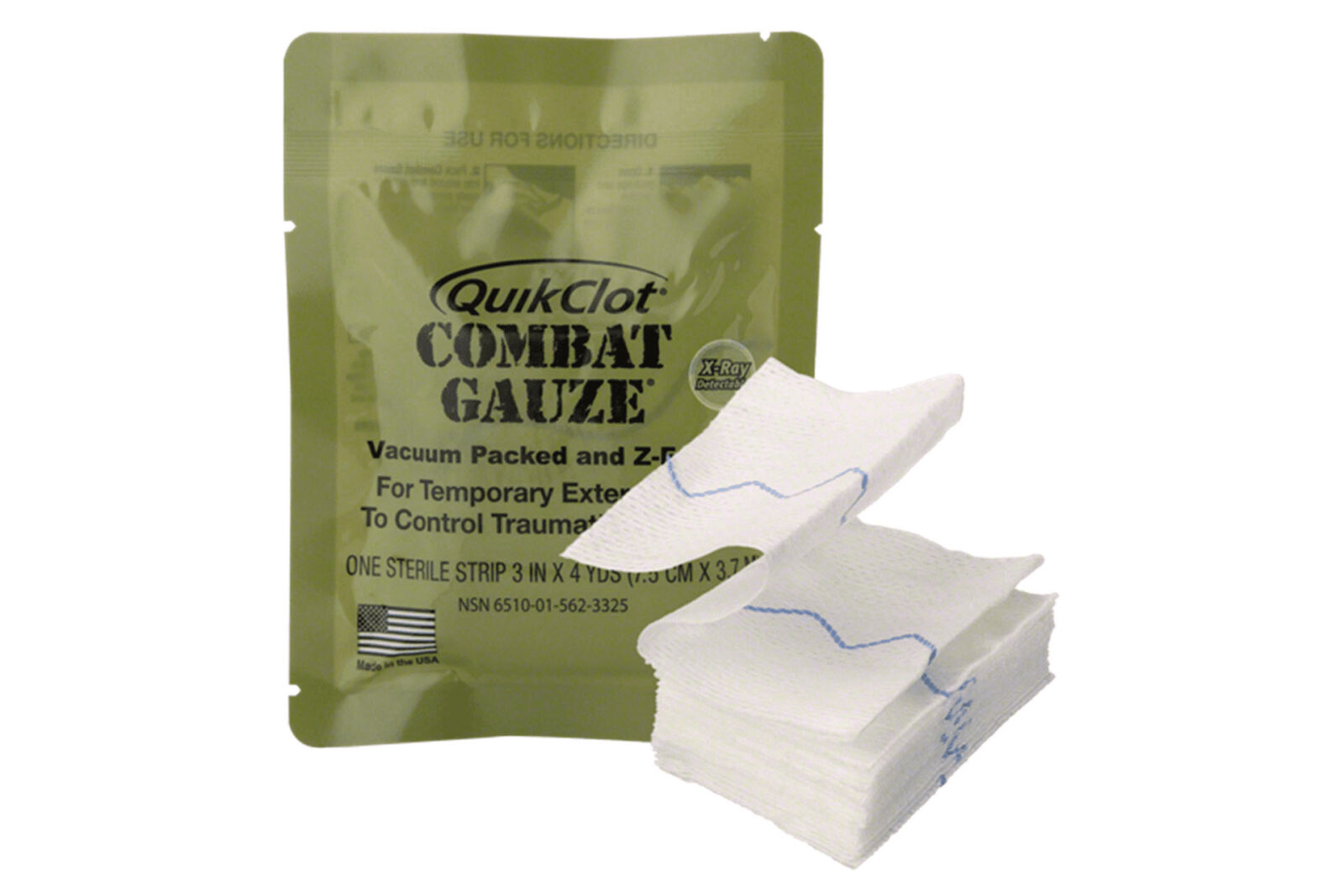
That’s why training is important. Learn the basics. Practice the basics. Drill. Drill under stress—time yourself, have friends yell at you while you apply a tourniquet. (Stress inoculation is a valuable tool.) Turn it into a game. But above all, learn the basics and—if it comes down to it—carry the gear you need to attempt to save a life.
Most shooting and hunting clubs, as well as first-aid and wilderness medicine institutes offer some iteration of Stop the Bleed training. Bring along your hunting buddies; it’s a good idea to learn as a group and bring that shared knowledge into the coming season with you.
Training 101
Ron Charrette has been a Los Angeles Deputy Sheriff for 10 years, and an EMT for six. In his daily role at his specific station he’s in charge of a team of more than 140+. His co-instructor Lee has been an EMT for six years in LA. Both contract with Medic Up to help teach courses, including Stop the Bleed courses.
And both are firm believers in carrying tourniquets. Medic Up notes, “A tourniquet is a vital component of any trauma kit. When applied correctly, it can quickly stop life-threatening bleeding in an extremity, buying valuable time for professional medical help to arrive. Carrying a tourniquet as a concealed firearm owner is a responsible choice that shows your dedication to public safety and preparation for emergencies.”
In their daily lives in LA, medical care can be delayed with traffic, staffing, or other issues. And for hunters in the backcountry, delayed medical care is a given. We’re on our own back in the mountains, and even if we’re able to call for an evac, there is going to be a time period—one of the longest of our lives—when any emergency is in our hands. The professionals aren’t there to help. The blood bank is far away in the next city, which sometimes might as well be the next country. When it’s up to us to save our buddy’s life, a calm, well-trained response is key.
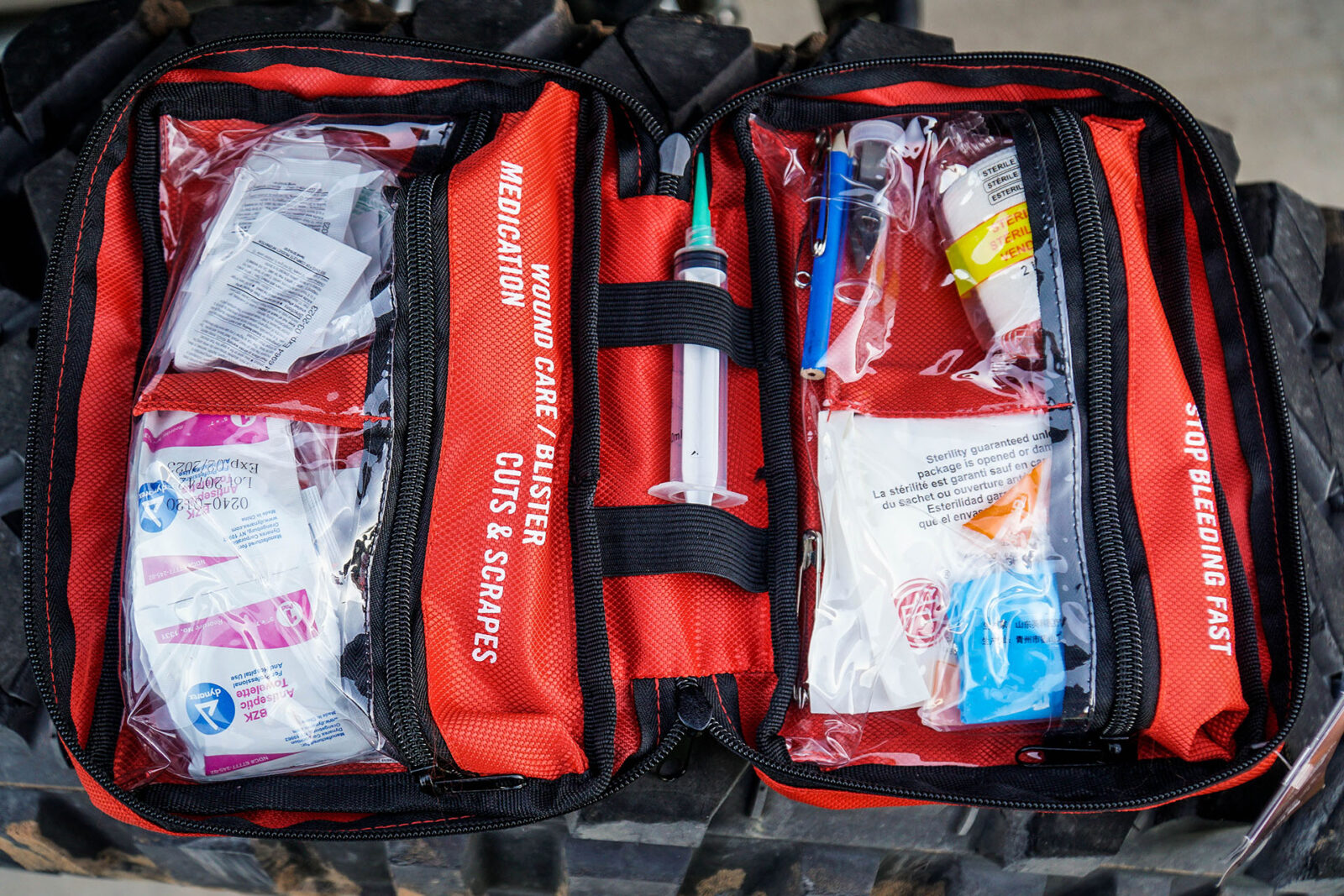
I’ve had several conversations with friends who have wondered, “Okay, but at what point do I apply a tourniquet? How do I know one is needed?”
Trust me, you’ll know. You’ll know when it’s a lot of blood.
The typical adult has roughly 1.2 – 1.5 gallons (4.5 to 5.5 liters) of blood in their body. Next time you’re in the grocery store, pick up a gallon of milk; that’ll give you a good visual. Imagine one and a half of those circulating around your body at any given moment. And then think just how quickly you can empty that gallon of milk down the sink drain. That volume of liquid can go places. Quickly.
Lose a liter of blood (less than one quarter of a gallon) and most humans will start to lose consciousness. Lose two liters—about half that milk gallon—and the situation just became life-threatening. And when, as Charrette notes, “Every drop of blood coming out of his body is a piece of gold,” there’s no time to waste.
In a pinch, even a fist, elbow, or knee can be used to compress vessels and slow blood flow. Get pressure on the wound, and get a tourniquet in place. (Don’t keep your tourniquet hidden on the bottom of your bag. Keep it visible and easy to access… the last thing you want to be doing when your friend is bleeding out is digging through your backcountry pack.)
For massive bleeds, keep the individual warm, even if it’s a hot summer day. A regulated body temperature is associated with better outcomes.
Your three priorities can be thought of as MAR: massive hemorrhage (aka lots of blood, coming fast), airway, and respiratory.
A massive hemorrhage is going to be messy. By definition, this is a massive bleed, with a lot of slick, hot blood covering the scene. It may be difficult to see just where on the limb the wound is, so place your tourniquet high and tight—this helps eliminate point-of-entry confusion. The first cinch is the most important, get it as tight as you can to help buy time to get the individual to a higher echelon of care (a clinic or hospital). After you’ve cinched down that first initial time, crank the windlass until you can’t twist any more, then twist “two more times,” according to Charrette.
A properly-applied tourniquet can hurt more than the wound, and so a calm, competent bedside manner is going to help both you and your buddy. Lee frames it in simple terms: “I’m going to save your life, and this is gonna hurt.”
Write the time of application (ideally in 24-hour military time) on the tourniquet, so the higher echelon of care will know when it was applied. Most modern tourniquets have a light-colored tab specifically for this annotation; carry along a permanent marker in your kit.
Most hunters or hikers will be carrying things in their pockets: extra rounds, a knife, a phone… snacks. Before applying a tourniquet high and tight on a leg, sweep through your buddy’s pockets to ensure there’s nothing in them that could get caught under the tourniquet and prevent full occlusion of the vessels. (It’s a good idea to keep trauma shears in your kit, too, so you can cut away clothing quickly and safely if needed. Certainly in your vehicle or range kits where weight and space is less of a concern.)
Don’t waste time trying to run a tourniquet from the foot up the leg—it takes precious seconds and if you’re dealing with potential broken bones moving the leg is only going to cause further damage and pain. Modern tourniquets come apart easily; pull it apart and run the tourniquet underneath the natural void under the knee. This allows you to start higher on the leg with minimal manipulation of the leg. Go high and tight, and watch to make certain… anatomical parts don’t get caught in the tourniquet.
Many times we roll our eyes at the saying, but “Slow is smooth, and smooth is fast” readily applies here. Keep things calm and efficient. The more you panic, the more the patient panics… and things go rapidly downhill from there. And remember, in a worst-case scenario, manual pressure is better than nothing.
But what about wounds around shoulders and hips, where a tourniquet can’t be applied? That junctional or soft tissue? Wound packing is your strategy here. Carry Z-Pak Gauze in your kit, along with a good bandage. Form a ball with one end of the gauze and pack it tightly into the wound cavity. Once the wound is snugly packed, stack the rest of the gauze on top of the wound and then wrap snugly around the wound and gauze.
The “A” in our “MAR” acronym is airway. We won’t go into great detail on that here as it’s another topic entirely, but ensure the individual is breathing well without an occluded airway.
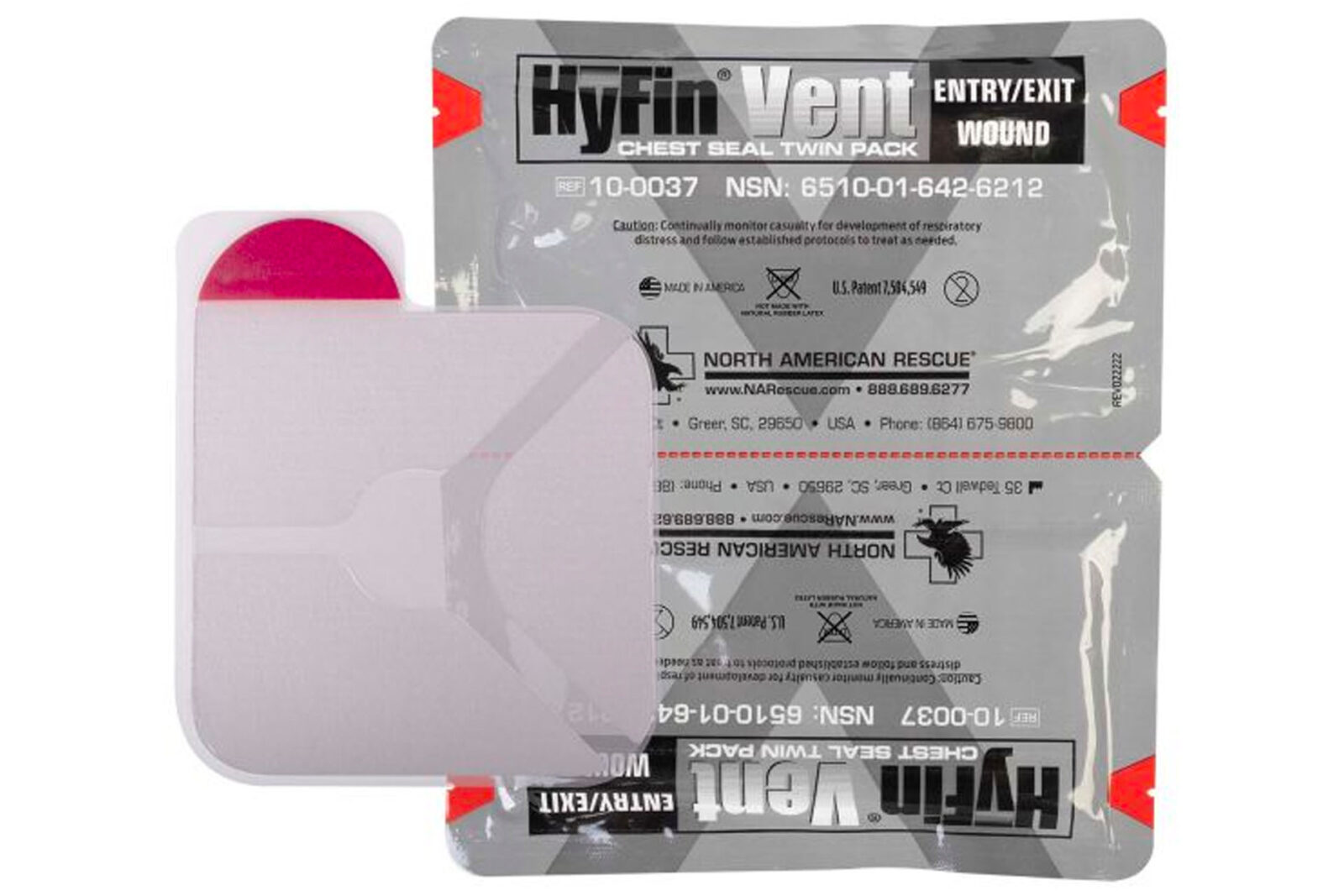
And the “R” in “MAR”? Respiration. Wounds ranging from the clavicle to the belly button are not good candidates for wound packing. Any guesses why? Think about it… we have two hollow organs in this space—the lungs. If we pack that space (experts say it would be possible to pack an entire bedsheet into this body cavity), we’re going to inhibit breathing and do far more harm than good. For wounds on the torso, carry a chest seal (Hyfin Chest Seals are high-performers). The chest seal acts as an occlusive dressing, designed for the prevention, management and treatment of an open and/or tension pneumothorax potentially caused by a penetrating chest trauma. They come in sets of two, and for good reason—a penetrating chest trauma is likely to have both an entrance and an exit wound (front and back).
The Daily Carry
So, you’re ready to take on the responsibility. What should you be carrying on the daily?
First off, add a tourniquet to your daily carry. Modern tourniquets are small and light, easy enough to add to your belt, bag, or vehicle (ideally, keep one in the vehicle regardless and one on your person). The Oxford Dictionary defines a tourniquet as “a device for stopping the flow of blood through a vein or artery, typically by compressing a limb with a cord or tight bandage.”
We saw quite an evolution of tourniquets over the past twenty years, due in a large part to the Global War on Terror. Two of the most popular designs on the market currently are the CAT (Combat Application Tourniquet) Gen 7 and the SOFT-T. Both models feature a windlass design that allows the user to cinch down pressure tightly to help slow bleeding (think a very tight cinch—the tourniquet is working when you can’t feel a pulse below it). In a life-or-death situation, a properly-applied tourniquet will be tight enough to hurt—but it can save a life.
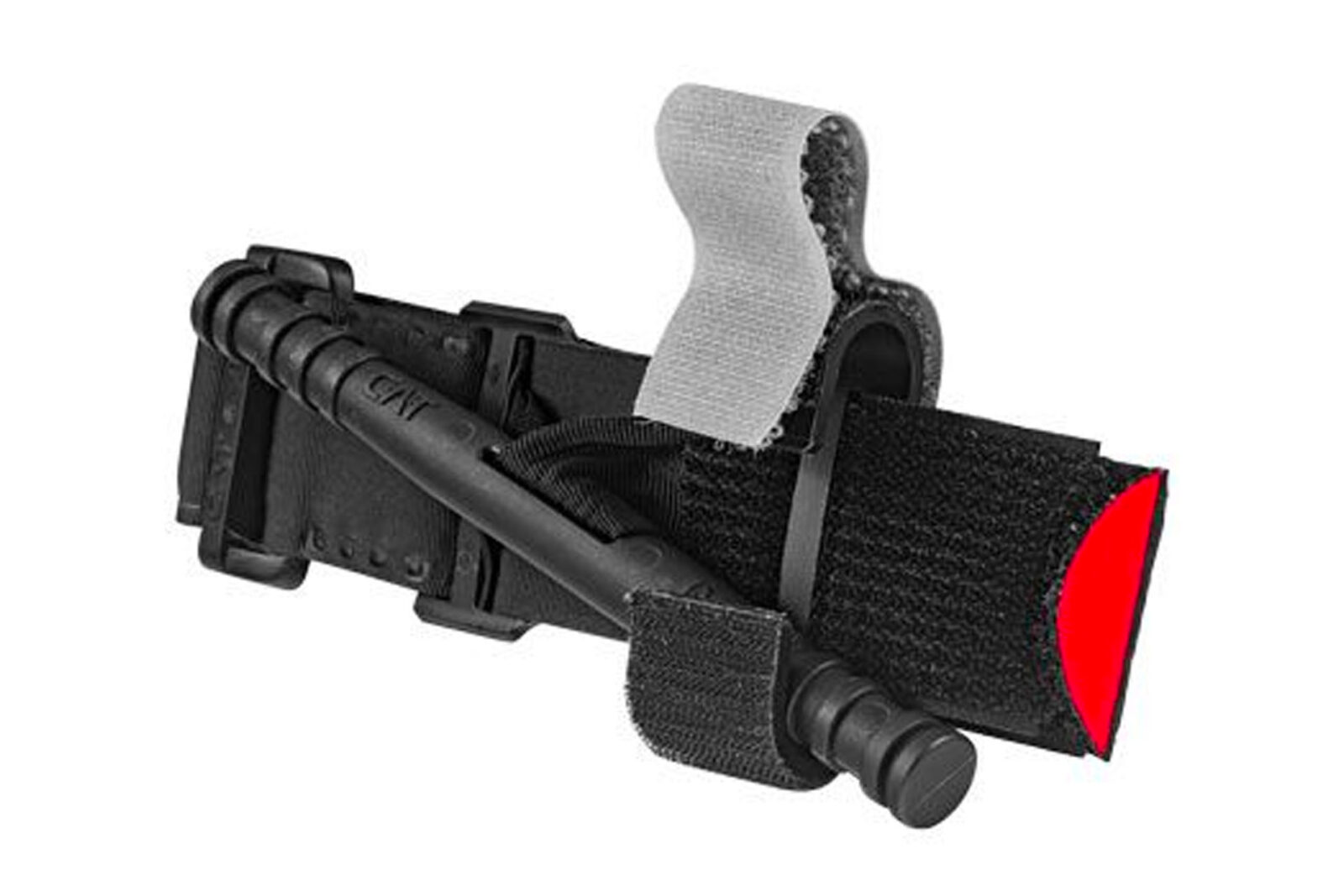
Your tourniquet will likely ship from the manufacturer sealed in plastic and wrapped snugly around itself. It must be “staged” before use; simply unwrap the tourniquet (you don’t want to be doing this with shaking hands slick with blood, so do it now). Prep in a z-fold (there are many online videos that show the details if you get stuck) and tuck it tidily into itself. Keep the tourniquet, along with a permanent marker, in a clearly labeled, readily accessible spot.
Other items to carry in your kit are Z-Pack gauze dressing and Hyfin Chest Seals, as discussed above. If you don’t have a Hyfin, you can get by with anything non-porous, laying it over the wound and taping three sides with Duct or Gorilla Tape. (Pro tip from the team at Medic Up: stick a few lines of tape on the outside packaging of your Hyfin, and in a pinch you can use that tape and packaging as additional chest seals.
Keep It Ready
That fancy medical kit isn’t going to do you much good if you buy it and it sits on the shelf in the laundry room or the garage.
“It’s cool that you have a med kit with a big cross on it,” Charrette notes, “But it doesn’t mean anything if you don’t know how to use it.”
Purchase or build out an IFAK (individual first-aid kit) or a larger group medical kit that you’ll actually use and keep close at hand. Consider one kit for the field, one for the truck, and one for home. And don’t be afraid to invest in a handful of tourniquets to stage throughout your life. (I keep one in my car, one in the apartment, one in my purse, one in my gym bag, and one in my camera bag.) It can seem like overkill, sure, but apply one tourniquet once, and you’ll never want to be without one again.
So buy the gear, sure, but also get the training.
And keep that gear accessible. Let the rest of your group know where it is, and ensure items can readily be grabbed in case they’re needed. For a while there was a trend of zip-tying tourniquets to packs… don’t do that. Sure, it’ll look cool but it’s not going to do you any good when you need it. Many companies make secure, easy-access tourniquet holders; consider one of those instead. And if you mount it on your belt or pack, place it where you can access with either hand—because you never know which hand might be incapacitated when you reach for it.
Be mindful of what tourniquets you buy. There are many options on the market, including many fakes that can—and will—break under pressure. The old adage of “what you pay for is what you get” holds true in this realm, and it’s worth shelling out the extra $20 or so to get a tourniquet that will actually hold when the time comes.
What if you’re in the backcountry and help is hours away? What if you’re in town and 911 doesn’t answer, or can’t get to you? You’re the one left making the calls. So buy the ticket, take the ride, and go in prepared.
Looking for a Stop the Bleed course near you? Find courses here.